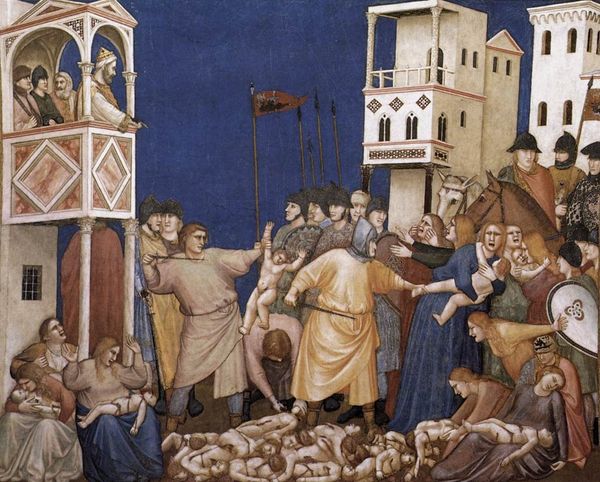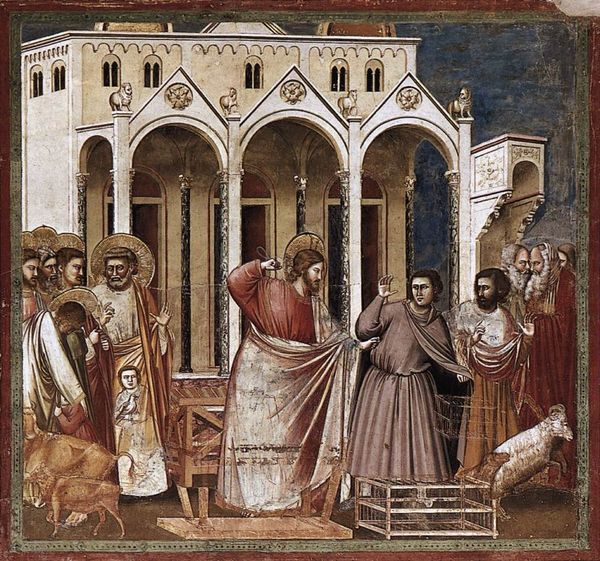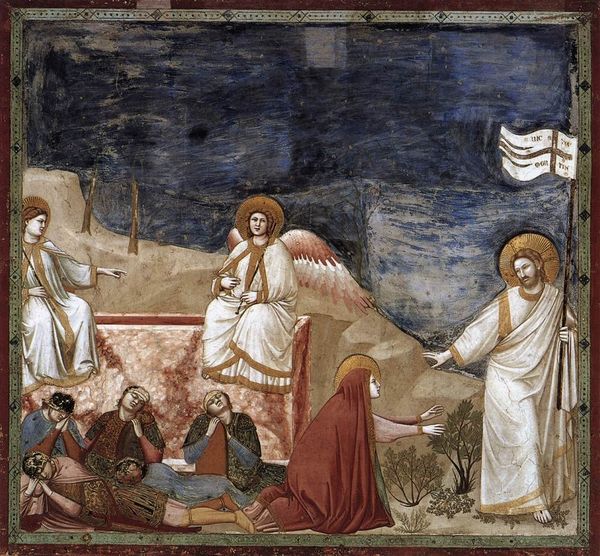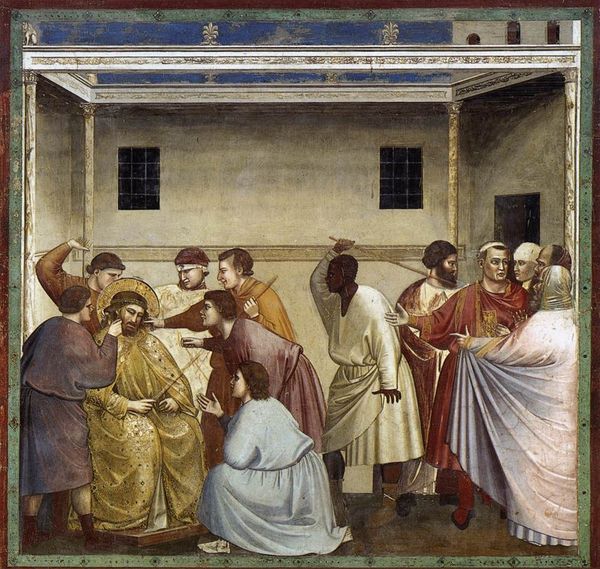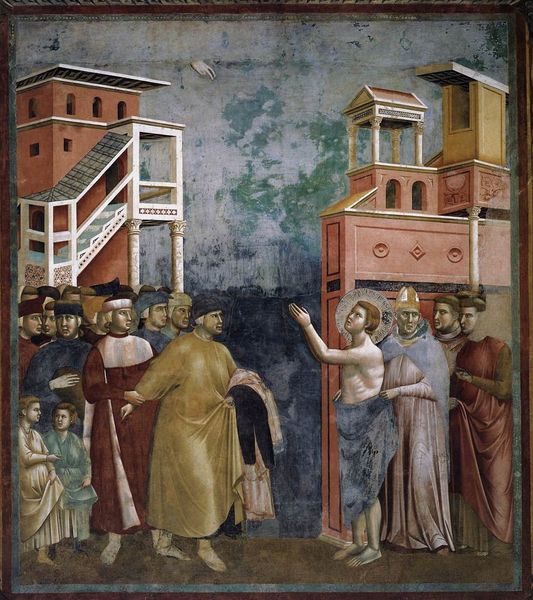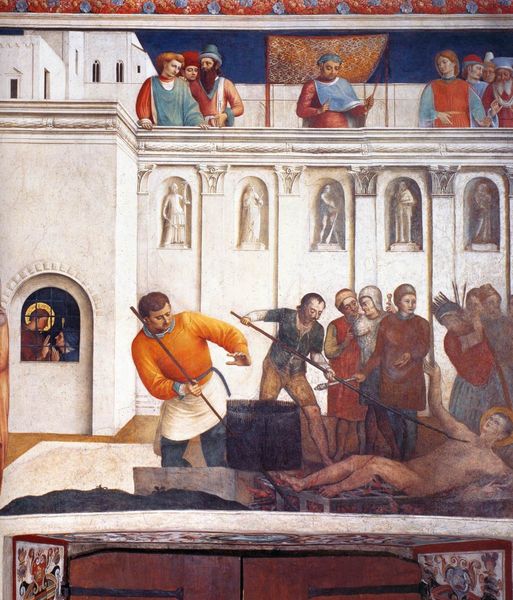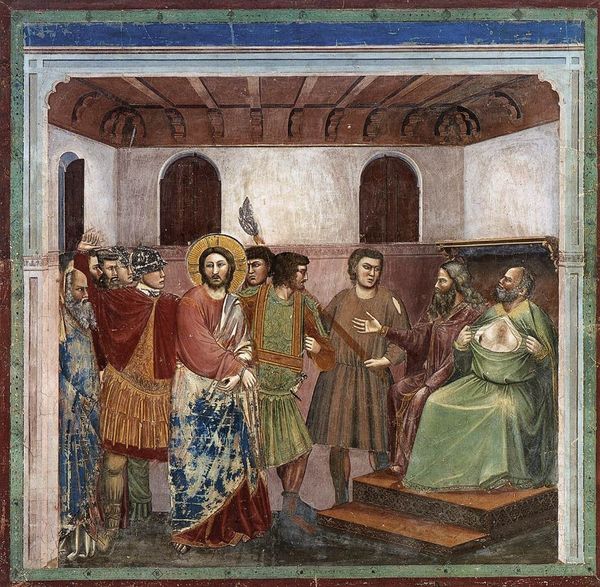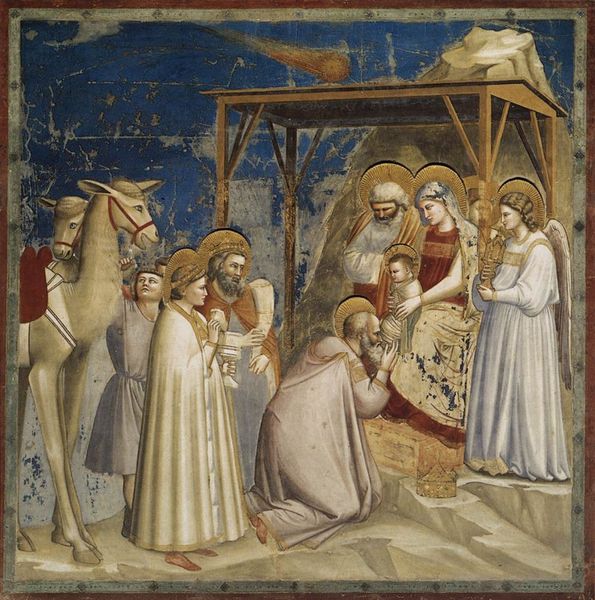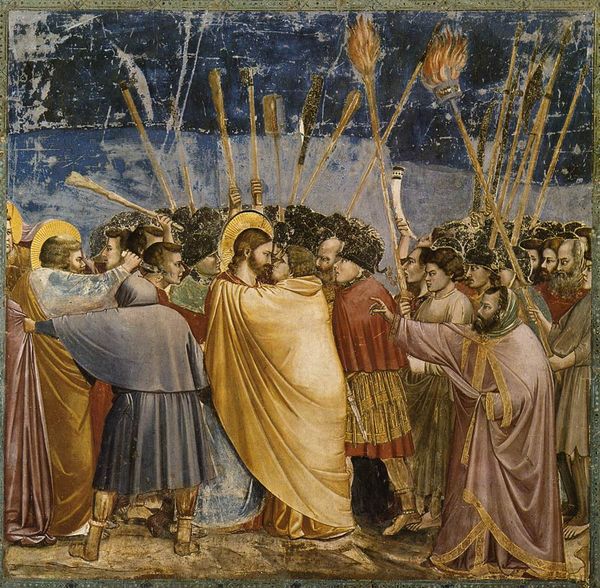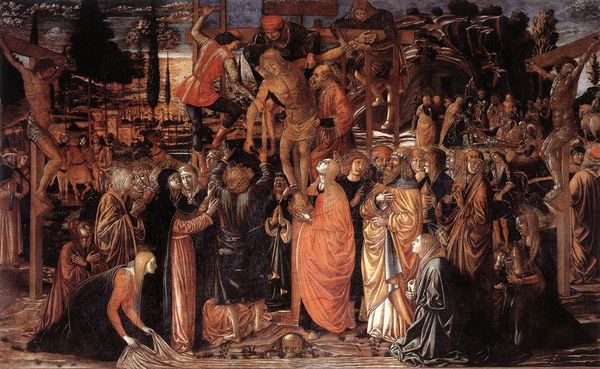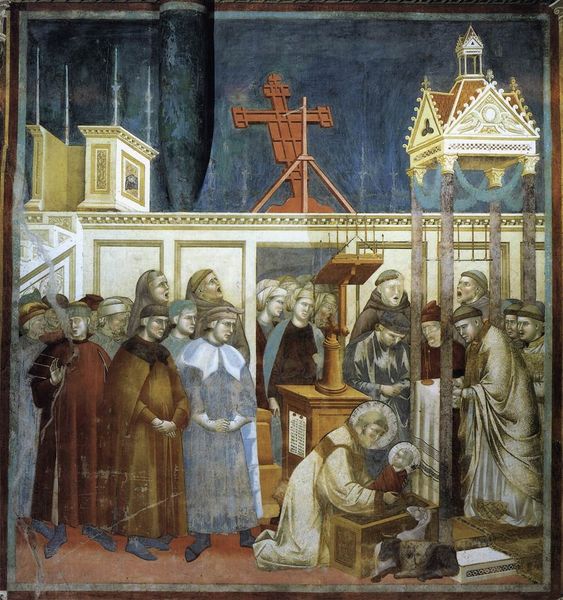
painting, fresco
#
medieval
#
allegory
#
narrative-art
#
painting
#
figuration
#
form
#
fresco
#
oil painting
#
jesus-christ
#
christianity
#
line
#
history-painting
#
italian-renaissance
#
early-renaissance
#
christ
Dimensions: 200 x 185 cm
Copyright: Public domain
Giotto painted “The Massacre of the Innocents” as a fresco, right here in the Scrovegni Chapel. Fresco is a demanding technique. The artist paints directly onto wet plaster, so each section must be completed before the plaster dries, requiring careful planning and a skilled hand. You can see how the work is divided into sections, or “giornate,” each representing a day’s work. The pigments are mineral-based, which gives the fresco its characteristic earthy tones and matte finish. The beauty of fresco lies in its permanence, the colours becoming part of the wall itself. But this durability came at a cost; fresco painting was physically laborious. Grinding pigments, preparing plaster, and the sheer exertion of painting on a vertical surface, all were intensive. So, when we look at this fresco, we’re not just seeing a depiction of a terrible event. We're also witnessing a testament to the labour and skill involved in its creation, a convergence of art, craft, and the social conditions of its making.
Comments
No comments
Be the first to comment and join the conversation on the ultimate creative platform.
